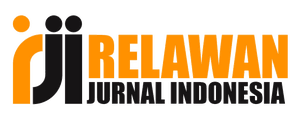Publication Ethics Statement
The statement of scientific ethics is a code of ethics for all parties involved in the process of publishing this scientific journal, including managers, editors, peer reviewers, and authors. This code of ethics for scientific publication is based on the Regulation of the Head of LIPI (Indonesian Institute of Sciences) Number 5 of 2014 concerning the Code of Ethics for Scientific Publications, which essentially upholds three ethical values in publication, namely: (i) Neutrality, which means being free from conflicts of interest in publication management; (ii) Justice, which means giving authorship rights to those entitled as authors; and (iii) Honesty, which means being free from duplication, fabrication, falsification, and plagiarism (DF2P) in publication.
Duties and Responsibilities of Journal Managers:
- Determine the journal's name, scope of knowledge, periodicity, and accreditation if required.
- Determine the membership of the editorial board.
- Define the relationship between the publisher, editors, peer reviewers, and other parties in a contract.
- Respect confidential matters, both for contributing researchers, authors, editors, and peer reviewers.
- Apply norms and provisions regarding intellectual property rights, especially copyright.
- Review journal policies and communicate them to authors, editorial board members, peer reviewers, and readers.
- Create a code of conduct guide for editors and peer reviewers.
- Publish the journal regularly.
- Ensure the availability of funding sources for the journal's sustainability.
- Build a network of cooperation and marketing.
- Prepare licensing and other legal aspects.
Duties and Responsibilities of Editors:
- Align the needs of readers and authors.
- Strive for continuous improvement of publication quality.
- Implement processes to ensure the quality of published works.
- Prioritize freedom of opinion objectively.
- Maintain the integrity of authors' academic records.
- Provide corrections, clarifications, retractions, and apologies when necessary.
- Be responsible for the style and format of the written works, while the content and all statements in the written works are the responsibility of the authors.
- Actively seek input from authors, readers, peer reviewers, and editorial board members to improve publication quality.
- Encourage evaluations of the journal if any findings arise.
- Support initiatives to reduce research and publication errors by requesting authors to attach Ethical Clearance forms approved by the Ethics Clearance Commission.
- Support initiatives to educate researchers about publication ethics.
- Review the effects of publication policies on authors, peer reviewers, and improve them to enhance responsibility and minimize errors.
- Have an open mind to new opinions or perspectives that may contradict personal opinions.
- Not maintain personal opinions, authors, or third parties that may result in biased decisions.
- Encourage authors to revise their written works until they are suitable for publication.
Duties and Responsibilities of Peer Reviewers:
- Receive assignments from the editor to review written works and provide review results to the editor as a basis for determining the suitability of a written work for publication.
- Reviewers should not review written works that involve them, either directly or indirectly.
- Maintain the privacy of authors by not disseminating correction results, suggestions, and recommendations by providing criticism, suggestions, input, and recommendations.
- Encourage authors to improve their written works.
- Re-review revised written works according to predetermined standards.
- Review written works promptly following the style of the journal based on scientific principles (data collection methods, author legality, conclusions, etc.).
Duties and Responsibilities of Authors:
- Ensure that those listed as authors meet the criteria as authors.
- Collectively responsible for the work and content of the article, including methods, analysis, calculations, and details.
- State the source of resources (including funding), both directly and indirectly.
- Explain the limitations of the research.
- Respond professionally and promptly to comments made by peer reviewers.
- Inform the editor if they intend to withdraw their written work.
- Make a statement that the submitted work is original, has not been published anywhere in any language, and is not under consideration for publication elsewhere.


